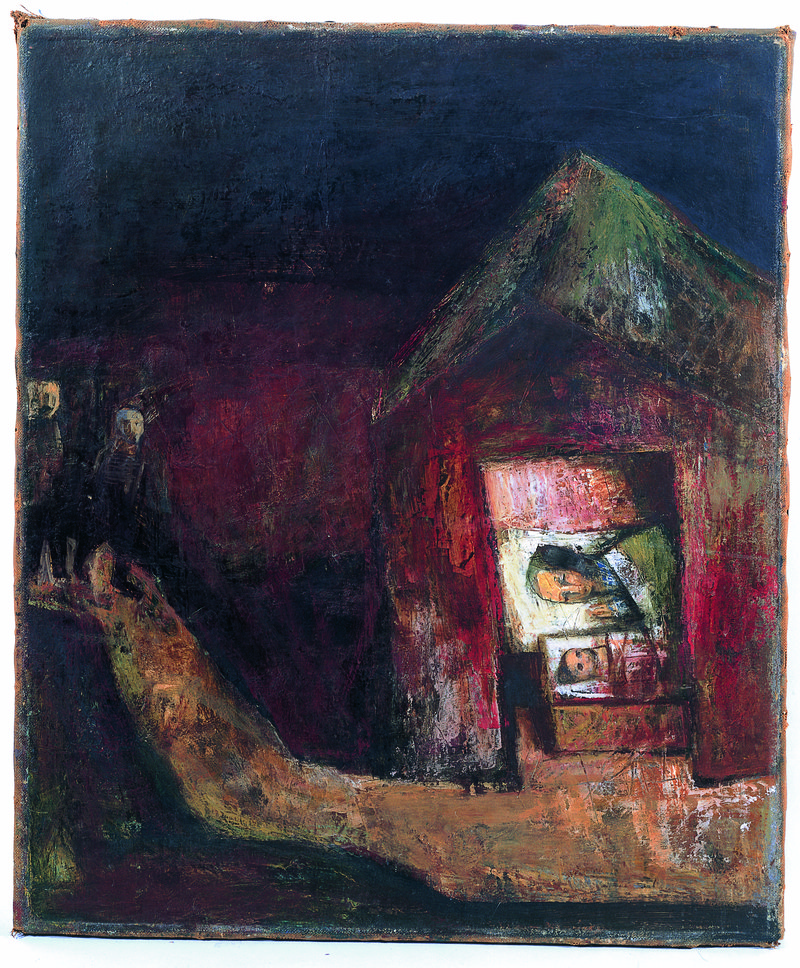
Albert Herbert (1925-2008)
Oil on canvas
77 x 65 cm
1962
Methodist Modern Art Collection
HERB/1962
Image Copyright © Trustees for Methodist Church Purposes. The Methodist Church Registered Charity no. 1132208
Biblical commentary
Matthew 2: 1–2, 11
This is a very dark, rich painting of blues, reds and browns. Herbert shows the three Magi at the extreme left of the painting, not richly dressed as kings, but perhaps rather wise, old men. They make their way along the track leading to the simple, four-square gabled stable where the baby Jesus in his manger is shown with Mary in a well-lit glowing interior. Epiphany, January 6th, is one of the six festivals that structure the Church year. In the Eastern Church, it celebrates the baptism of Jesus while in the Western Church it is concerned with the manifestation of Jesus to the Gentiles through the Magi’s worship of the baby Jesus.
Commentary based on A Guide to the Methodist Art Collection.